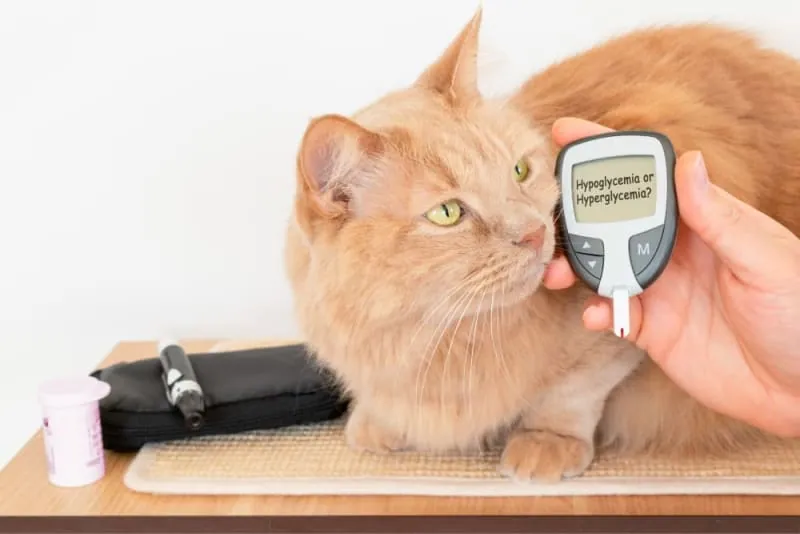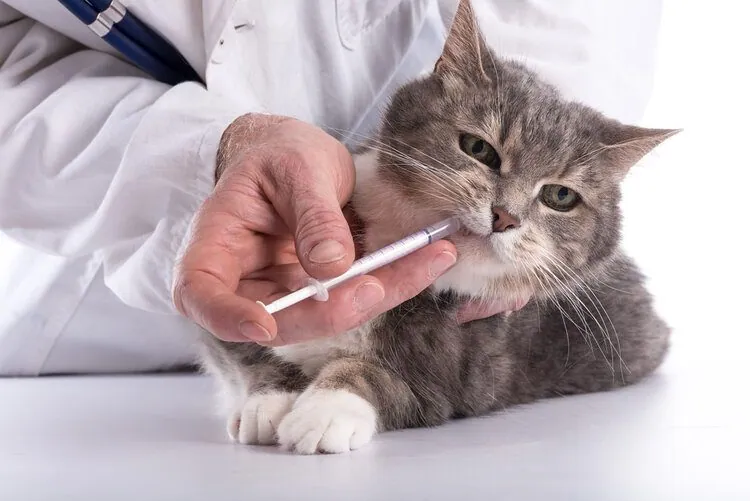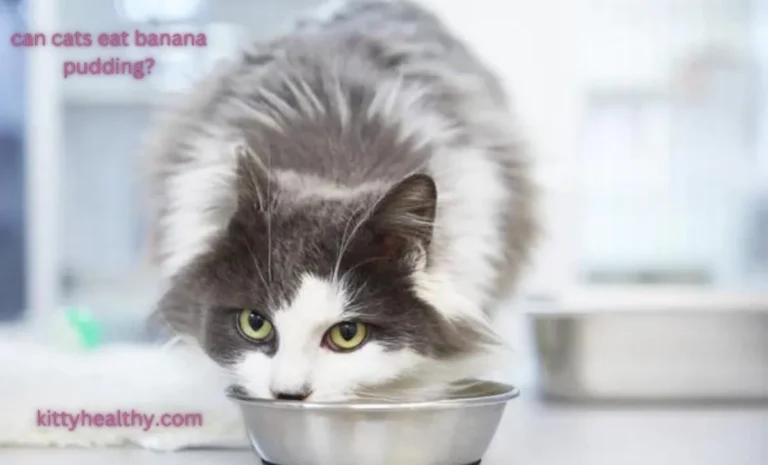Diabetes In Cats: A Complete Guideline
Diabetes mellitus, commonly referred to as diabetes in cats, is a condition that disrupts the normal metabolism of glucose in the body and has become increasingly prevalent in the feline population, reflecting a similar trend observed in humans.
This endocrine disorder occurs when the pancreas fails to produce sufficient insulin or when the body’s cells become resistant to insulin’s effects, leading to elevated blood glucose levels. In cats, Type 2 diabetes is more commonly observed, often linked to factors such as obesity, sedentary lifestyle, and genetic predisposition.
Condition like this particularly notable in middle-aged to senior cats, with certain breeds like Burmese showing a higher susceptibility, underscoring a blend of hereditary and lifestyle influences in the development of feline diabetes.
Symptoms of diabetes in cats
Recognizing the signs and symptoms of diabetes in cats is crucial for early detection and effective management of common feline condition.symptoms of diabetes in cats are given below.
Increased Thirst (Polydipsia): Cats exhibit an unusual increase in water consumption to eliminate high glucose levels.
Frequent Urination (Polyuria): The attempt to expel excess glucose results in more frequent and voluminous urination.
Weight Loss Despite Normal/Increased Appetite: Cats experience unexplained weight loss as their bodies use fat and muscle for energy, bypassing unusable glucose.
lethargy and Reduced Activity:Affected cats show decreased energy and activity levels due to glucose deprivation in cells.
Plantigrade Stance: Some cats adopt an abnormal walking posture, using their hocks due to diabetes-induced nerve damage.
Changes in Coat Condition: Diabetic cats may have dull, unkempt fur as a result of decreased grooming activity and overall health decline.
Appetite Fluctuations: Alongside increased hunger, some cats may experience periods of reduced appetite as the disease progresses.
Vomiting and Nausea: Advanced cases of feline diabetes can lead to gastrointestinal upset, manifesting as vomiting or nausea.
Weakness in Hind Legs: The nerve damage associated with prolonged high blood sugar can lead to weakness or instability in the back legs.

Diagnosing Diabetes in Cats
Diagnosing diabetes involves a combination of clinical signs and diagnostic tests, including blood glucose levels and fructosamine tests, which provide an average glucose level over the last two weeks. A thorough veterinary examination may also include urinalysis to check for glucose and ketones in the urine, which are indicative of diabetes.
Treatment of diabetes in cats
The treatment of diabetes in cats typically involves a comprehensive approach that includes insulin therapy, dietary modifications, and regular monitoring of blood glucose levels
Insulin Therapy for Feline Diabetes
Insulin injections are central to controlling glucose levels in diabetic cats. Administered under veterinary supervision, the dosage is tailored to each cat’s specific needs. Consistent insulin therapy helps mimic the natural insulin production, stabilizing the cat’s metabolic state.
Dietary Management in Diabetic Cats
A specialized diet, rich in protein and low in carbohydrates, is key to managing feline diabetes. This dietary approach aids in maintaining stable blood glucose levels, reducing the dependency on insulin. Regular meal times further support blood sugar regulation.
Monitoring and Adjusting Treatment
Regular blood glucose monitoring, both at home and through veterinary check-ups, is essential for tracking the effectiveness of treatment. Adjustments to insulin dosage and dietary plans are made based on these monitoring results, ensuring optimal care for diabetic cats.Treating
Diabetes in Cats Without Insulin
Treating diabetes in cats without insulin primarily involves dietary management and, in some cases, oral medications. A strictly controlled diet high in protein and low in carbohydrates can significantly impact blood glucose levels, potentially reducing the reliance on insulin.
Oral hypoglycemic agents, such as glipizide, may be prescribed to stimulate insulin production in the pancreas, though their effectiveness varies among individuals. This non-insulin treatment route is often explored in cases where insulin therapy is not feasible or in early-stage diabetes management.

Choosing Not to Treat Feline Diabetes
Choosing not to treat feline diabetes is a decision that comes with significant considerations. This approach may be considered in cases where a cat’s age, overall health, or coexisting medical conditions limit the effectiveness or feasibility of standard treatment options.
It’s important to understand that untreated diabetes can lead to serious complications, including neuropathy, ketoacidosis, and decreased quality of life.
medicine helps in controlling cat diabetes
| Medicine | Purpose | Administration |
|---|---|---|
| Insulin | Regulates blood sugar by supplementing the cat’s insulin levels. | Injected subcutaneously, dosage and type determined by veterinary assessment. |
| Glipizide | Stimulates the pancreas to produce more insulin, reducing blood sugar. | Oral medication, dosage adjusted based on response and veterinary guidance. |
| Metformin | Improves insulin sensitivity, aiding in glucose utilization. | Oral medication, less commonly used, requires veterinary supervision for dosage. |
| Acarbose | Slows carbohydrate absorption in the intestines, reducing blood sugar spikes. | Oral medication, used alongside diet changes, under veterinary guidance. |
| Pioglitazone | Increases insulin sensitivity and reduces liver glucose production. | Oral medication, used in specific cases, under strict veterinary supervision. |
Diet Helps in Controlling Cat Diabetes
| Component | Purpose | Examples |
|---|---|---|
| High Protein | Mimics natural diet, stabilizes blood sugar levels. | Canned wet foods high in meat content, specially formulated diabetic cat food. |
| Low Carbohydrates | Reduces insulin spikes, supports glucose regulation. | Avoid foods with grains and fillers, opt for low-carb canned foods. |
| Specific Food Recommendations | Provides balanced nutrition tailored for diabetic cats, offering a variety of options. | Purina Pro Plan Veterinary Diets DM, Hill’s Prescription Diet m/d, Royal Canin Veterinary Diet Diabetic. |
| Avoid High-Sugar Foods | Minimizes risk of glucose spikes, promotes overall health. | Steer clear of treats high in sugar and carbohydrates. |
diabetes in cats life expectancy
Cats with diabetes can live long and healthy lives, almost like cats without diabetes, if their condition is well taken care of. Catching the diabetes early and sticking to the treatment plan, which includes giving insulin shots and changing the cat’s diet, is key.
Regular visits to the vet are also important to make sure the treatment is working and to catch any other health issues early. If a cat owner is dedicated to taking good care of their diabetic cat, the cat can still have a happy and active life. It’s all about managing the diabetes well and keeping a close eye on the cat’s health.
Read more: How Do Indoor Cats Get Colds?
FAQ’s
The lifespan of a cat with untreated diabetes varies significantly. Without treatment, complications can arise quickly, potentially leading to a life expectancy of a few months to a year. Early symptoms may worsen, affecting the cat’s quality of life. Immediate veterinary care is crucial for a positive outcome.
Diabetic cats often feel constantly hungry. This happens because insulin, which helps their bodies turn sugar into energy, isn’t working well. So, even though they’re eating, their bodies aren’t getting the energy they need. This leads to a cycle where they eat, get hungry quickly, and end up eating more throughout the day.
Diabetic cats may experience increased lethargy, leading to more sleep than usual. This change in energy levels is due to their body’s inefficiency in using glucose for energy, resulting in fatigue.
Cats with diabetes may not directly feel pain from the condition itself, but complications like neuropathy can cause discomfort. Neuropathy, a common issue in diabetic cats, affects nerve function, leading to weakness or pain in the limb
Conclusion
Diabetes in cats is a significant health issue that requires awareness, early detection, and effective management. Understanding the symptoms, especially in at-risk groups like senior and male cats, is crucial for early intervention. With the right treatment plan, which may include insulin, medication, and dietary changes, cats with diabetes can continue to lead happy and healthy lives.






